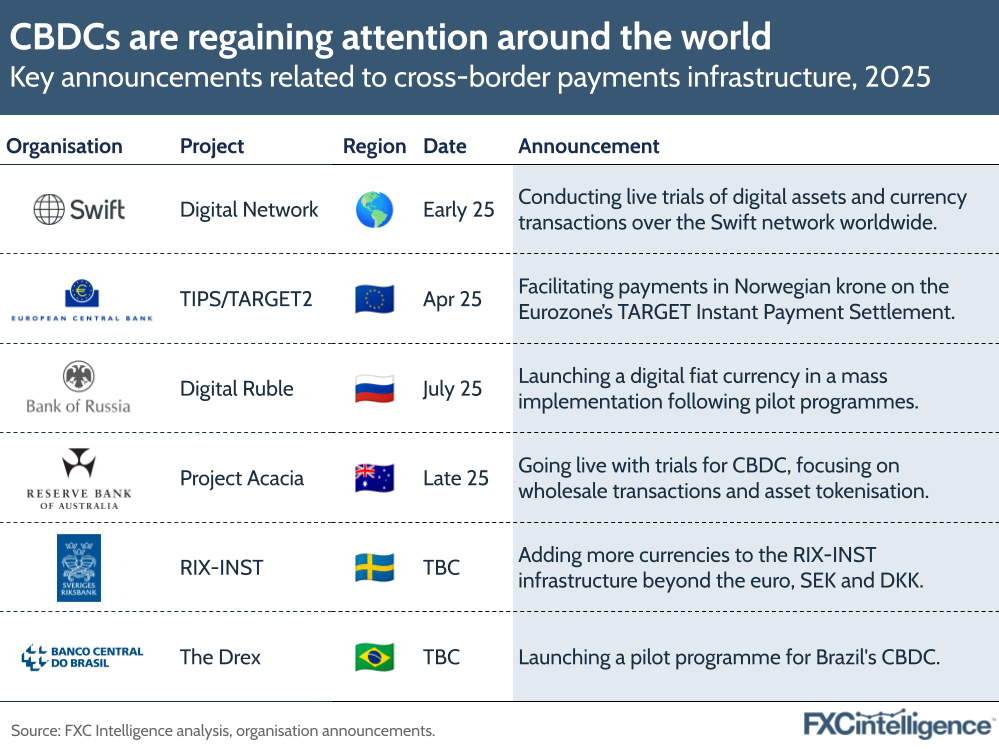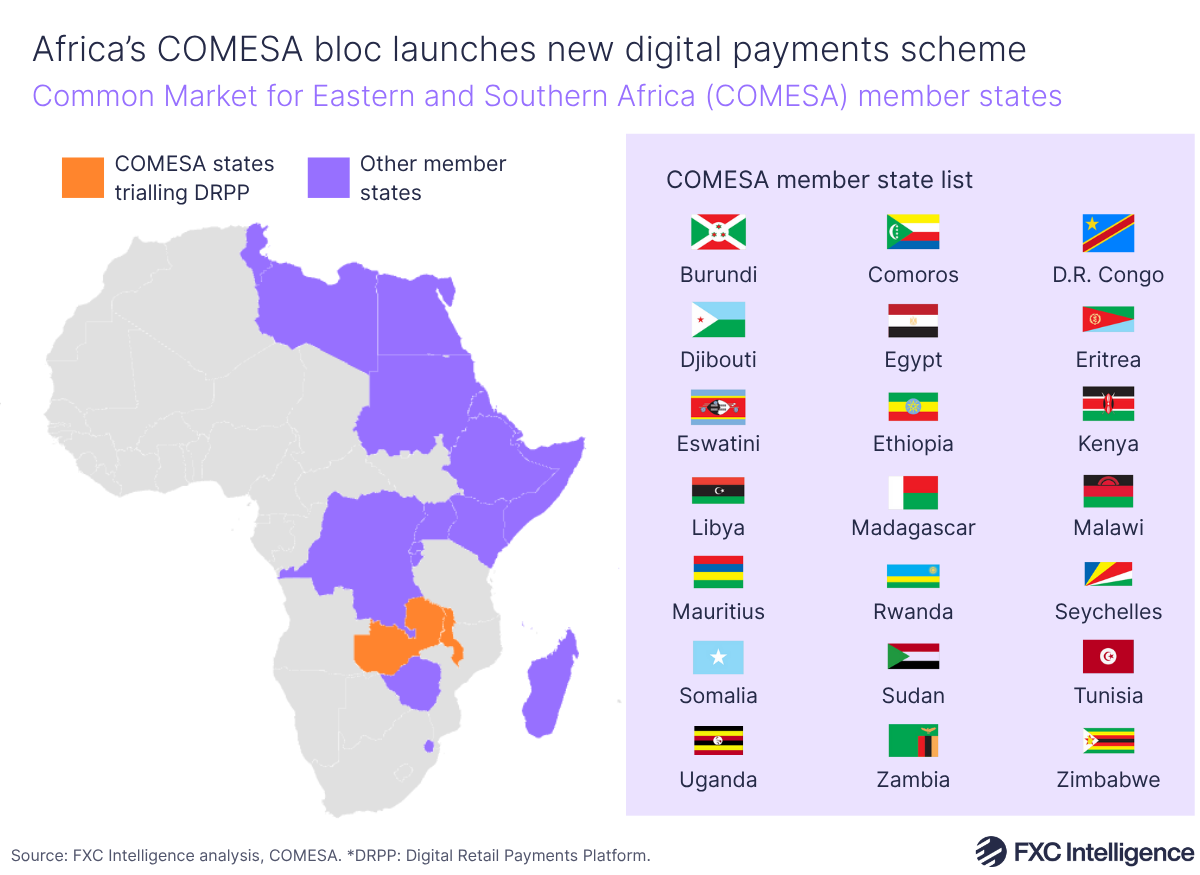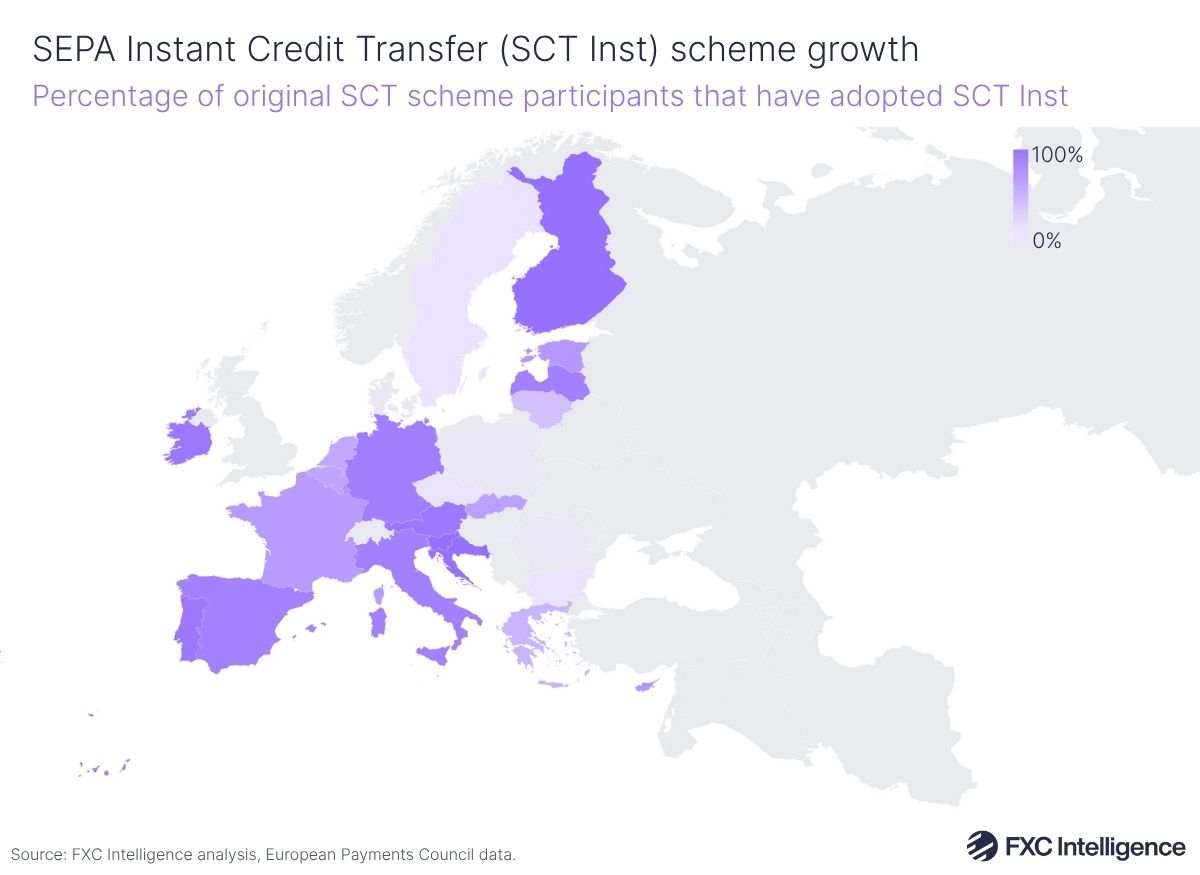Many countries signalled a shift away from central bank digital currency (CBDC) projects in early 2024, reducing research funding and delaying trials, to focus on interconnecting established payments infrastructures. But what does this mean for 2025? We explore future plans for cross-border payments infrastructure worldwide.

Starting in 2025, Swift is launching live trials for settlements of digital assets, following experiments that demonstrated their ability to facilitate public and private blockchains and interlink CBDC on a global scale. Swift is also exploring how its network could integrate with bank-led financial systems by participating in the BIS-led Project Agora, which is investigating tokenised bank deposits and wholesale CBDC on a unified platform.
Meanwhile, the European Central Bank has announced plans to expand the Eurozone’s TARGET Instant Payment Settlement (TIPS) service to include the Norwegian krone from April 2025, adding to the currently available euro, Swedish krona and Danish krone.
The Swedish central bank also opened its instant payments infrastructure (RIX-INST) to non-local currencies in November, including the euro and Danish krone, with plans to add more currencies after the initial phase. While the central bank offers the foundational infrastructure, banks connected to RIX-INST will provide a wide range of instant payments services. This move highlights regional collaboration among the Nordic countries and the European Central Bank.
The Bank of Russia is looking in a different direction, focusing on centralised digital currency. According to TASS, Russia’s state-run news agency, Russia is aiming to launch its “digital ruble” by July 2025, following successful pilot programmes. The Bank of Russia is expecting the digital fiat currency to be implemented on a widespread scale, but the transition would likely be a gradual process.
Similarly, many central banks announced significant milestones in their CBDC projects. For example, the Reserve Bank of Australia embarked on a three-year project called Project Acacia, exploring a wholesale CBDC and tokenised assets. The first phase of Project Acacia was completed in 2024, and the project is expected to conclude in the second half of 2025.
The Brazilian CBDC, however, is expected to publicly launch in 2025, although the initial plan was to launch by the end of 2024. Developed by Banco Central do Brasil, the Drex was delayed by issues with the country’s regulatory framework and infrastructure. Despite these setbacks, Brazil’s CBDC pilot programme is already in its final stages.
How can FXC Intelligence help me navigate industry changes in 2025?


